The North Table Mountain Ecological Reserve (near Oroville, CA) is one of my favorite wildflower sites to visit. I try to get there every year, and I’m never disappointed. I’ve written about it in prior years. It is one of the most accessible wildflower sites that I know of. You can see wonderful vistas of flowers without even getting out of your car, but if you do get out and wander around it gets even better!
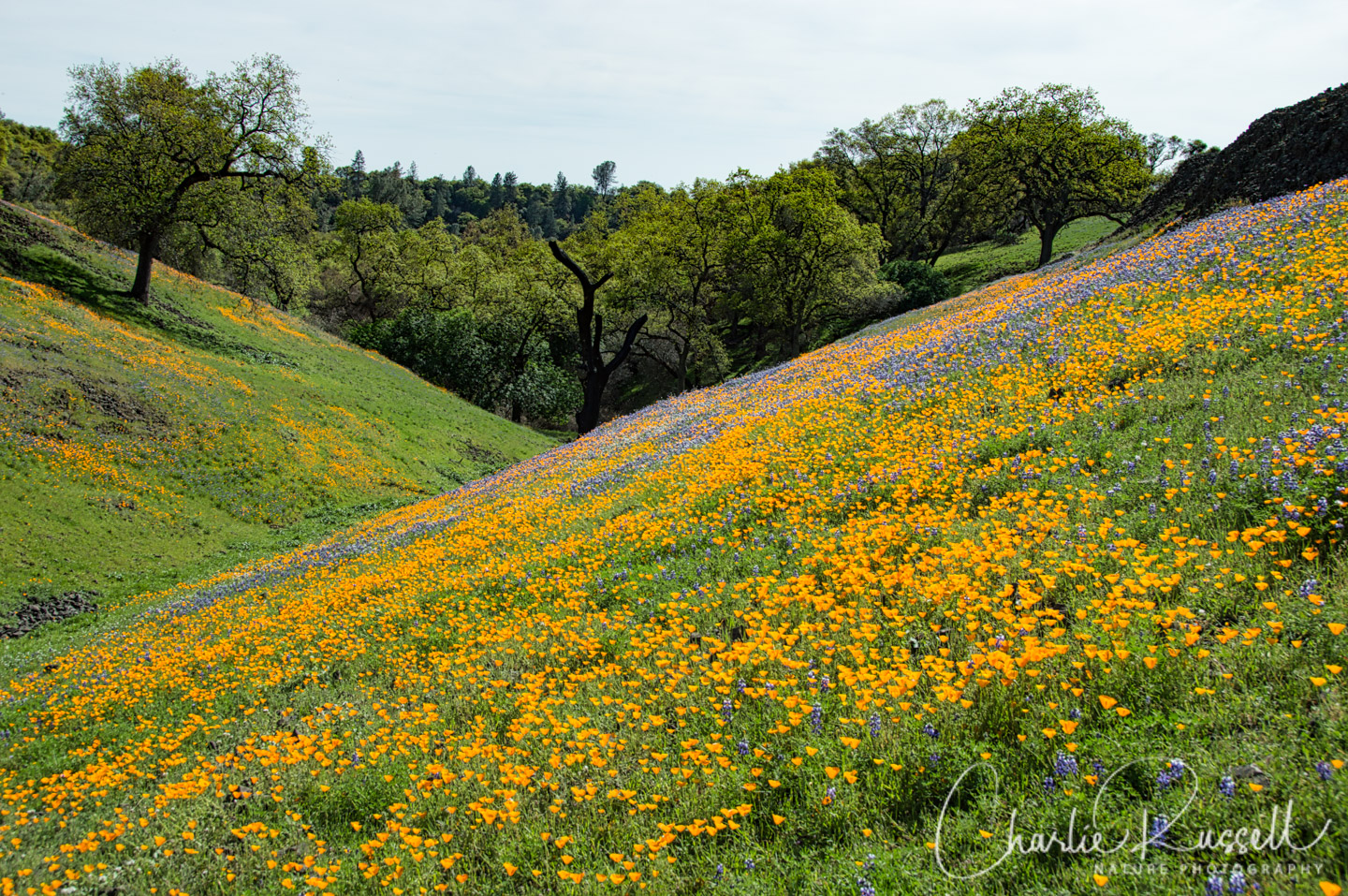
It is a large property, and you don’t need to follow the trails. The only issues you have to deal with are cattle (not a big problem), and paying attention to how to get back to your car. There are a lot of deep canyons that make navigation a challenge, sometimes. But it is worth it!
The Hike
I’m not going to post my GPS track for this visit, because we wandered quite a bit. I was trying to find a particular feature, which I didn’t find, but we stumbled across an area that we haven’t visited before. And then my path back to the car (off trail) was interrupted by multiple canyons. Our short hike ended up taking almost all day, BUT it was worth it, as we found several flowers that I’ve not seen here before.
I highly recommend that you download the North Table Mountain map from the Chico Hiking Association if you plan on visiting North Table Mountain. It is invaluable. It shows the best locations to visit, and most importantly it has the GPS coordinates of each point of interest. I used this map, along with a GPS app on my iPhone, to navigate to various points.
Normally people head off northwest across the table top towards the waterfalls of Coal Canyon. That is always a great option, as there are many interesting flowers to see. This year, however, the flowers in that direction weren’t as bountiful as other years. They were still good, but not as good as I’ve come to expect.
This year (2018) the best locations were southwest of the parking lot, in Beatson Hollow. After wandering around the oak savanna area in the southern end of the Reserve we ended up at Beatson Junction (see the hiking map). There is a well established trail that leads to this area (which we didn’t take at the beginning of our hike). There were cascades of flowers flowing down the hillsides, the best that I’ve ever seen at North Table Mountain! Here’s one example, there are several more in the photo gallery at the end of this article.
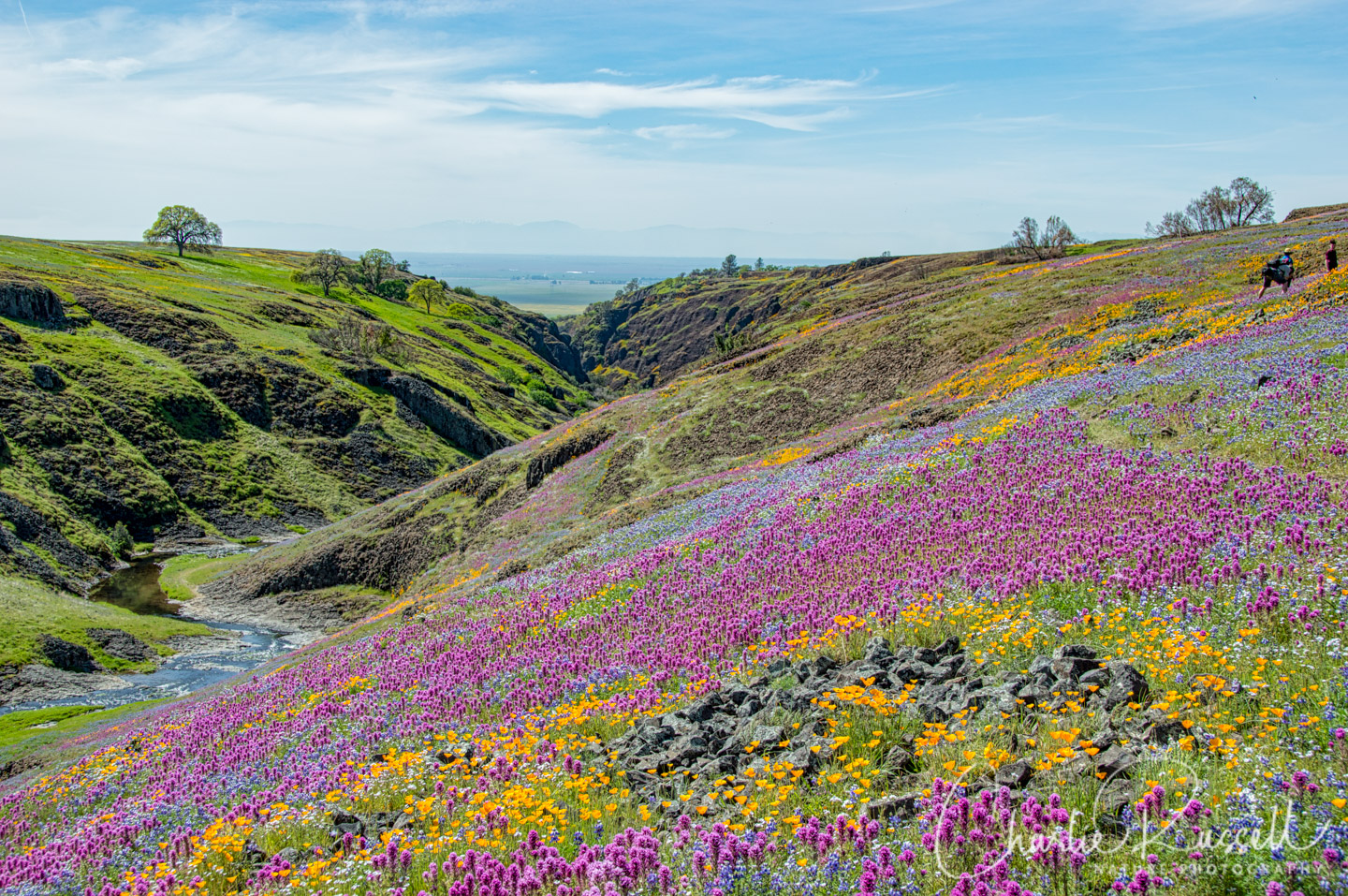
Directions
The North Table Mountain Ecological Reserve is located on Cherokee Road, north of Oroville, CA. It is best to park in the parking lot at the location on the map below. Lots of the land in this area is private, if you start from the parking lot and head west you will generally be on the reserve. Note that on weekends this parking lot can be very crowded.
During the flowering season there are portable toilets at this location. (Note: in 2022 a permanent restroom was added in the parking lot.)
In 2018 the California Department of Fish and Wildlife added this site to the CDFW Lands Pass program. This means that each visitor that is 16 years old or older must have a pass to access the property. At the time I’m writing this article the passes are $4.32 per day, or $25.10 for a calendar year. You can purchase this in advance, or obtain one by phone. They are not available for purchase at the site. I recommend that you get one.
Timing is Everything
The season for North Table Mountain is highly dependent on rainfall and temperature. It can get quite hot up there in the late spring, and often it is quite windy, so I suggest checking the weather forecast before visiting. I generally aim for late March and early April. If the table top is drying out, head down into the canyons. The collection of flowers that you see will vary throughout the season for all of March and April, possibly into May.
After rainfall there are waterfalls in many locations.
Wildflowers of Table Mountain Guidebook
If you are planning on visiting the area I recommend purchasing a wonderful guide for the area, Wildflowers of Table Mountain by Albin Bills and Samantha Mackey. It talks about the history of the area, the geology (which is what makes this area so unique), and the animals you may see. Most of the book contains photos and interesting line drawings of the flowers that you will commonly find in the Reserve, along with tips on how to identify them and possibly where to find them. There also is a comprehensive list of flowering plants in the back of the book. It is very useful!
North Table Mountain Beatson Hollow Wildflowers
Here’s a sample of a few of my favorites from this hike. Please feel free to correct any errors I may make.
This was the first time I’d come across the Prairie woodland star at this location. This flower is found only in California. It was down in the canyons.
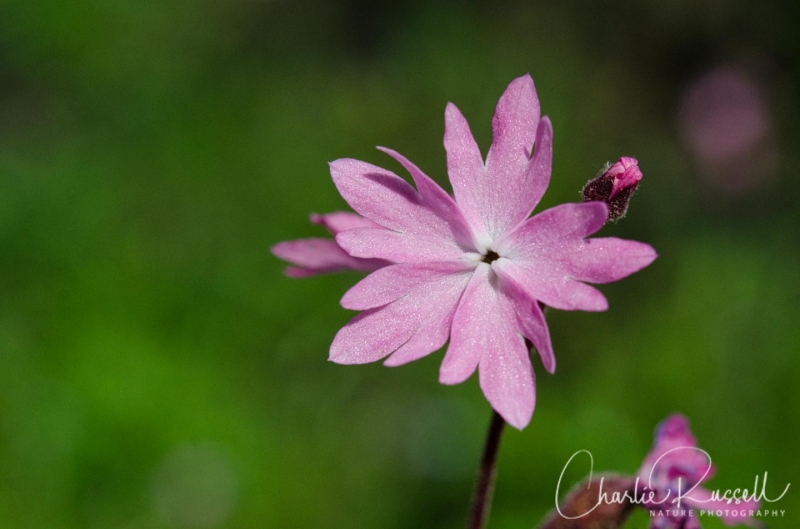
We found lots of California pipevine swallowtail butterflies. The were feeding on the Blue Dicks.
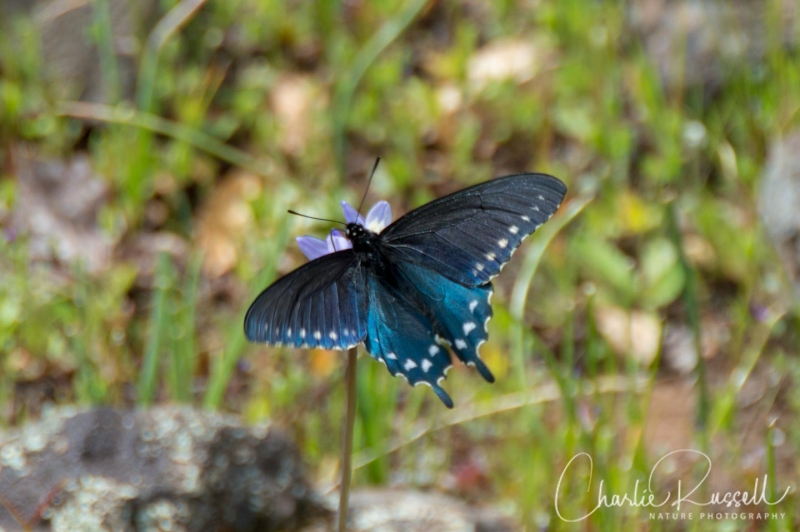
Bitter root is probably my favorite flower here. You’ll find them in the very exposed, black lava areas.
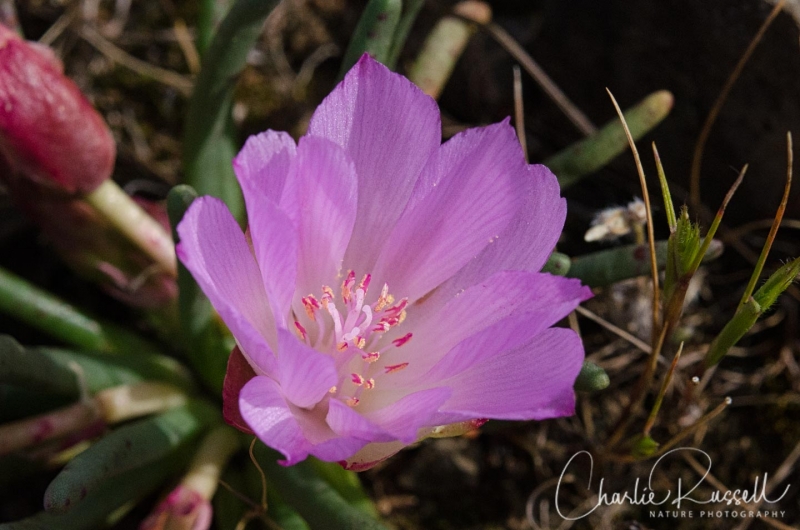
Red larkspur is another flower I’ve not come across here before. Also found down in the canyons.

For the best viewing experience, click on the lightbox image below, and you can scroll through larger versions of the photos of many of the plants (and other things) that we found on this hike. All photos are available for purchase in a variety of formats.

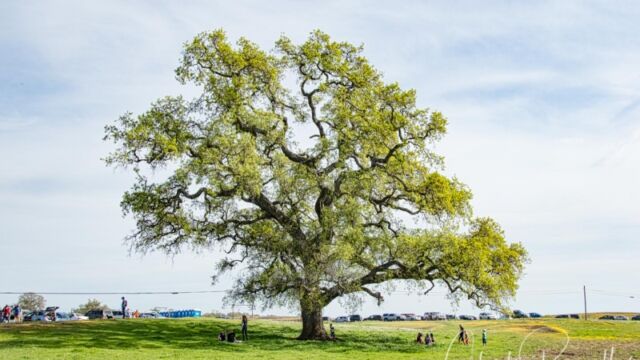
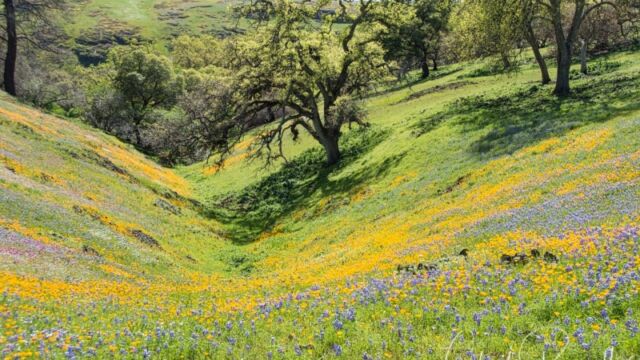
Here’s a listing of what I found on this visit. As you can see, this is a very extensive list of native plants, which is one of the reasons why this is such a wonderful place to visit.
- Bird’s eye gilia (Gilia tricolor ssp. tricolor)
- Bitter cress (Cardamine oligosperma)
- Bitter root (Lewisia rediviva)
- Blue dicks (Dichelostemma capitatum ssp. capitatum)
- Bolander’s woodland star (Lithophragma bolanderi)
- California goldfields (Lasthenia californica ssp. californica)
- California man-root (Marah fabacea)
- Canyon nemophila (Nemophila heterophylla)
- Caraway leaved lomatium (Lomatium caruifolium)
- Cascade Onion, aka Volcanic onion (Allium cratericola)
- Caterpillar phacelia (Phacelia cicutaria)
- Common fiddleneck (Amsinckia intermedia)
- Douglas’ sandwort (Minuartia douglasii)
- Douglas’ violet (Viola douglasii)
- Dwarf sack clover (Trifolium depauperatum var. depauperatum)
- Foothill poppy (Eschscholzia caespitosa)
- Fringe pod (Thysanocarpus curvipes)
- Frying pans poppy (Eschscholzia lobbii)
- Goosefoot violet (Viola purpurea ssp. quercetorum)
- Ithuriel’s spear (Triteleia laxa) on the road up
- Kellogg’s monkeyflower (Diplacus kelloggii, formerly Mimulus kelloggii)
- Lilac pretty face, aka Glass Hyacinth (Triteleia lilacina)
- Longbeak stork’s bill (Erodium botrys)
- Miner s lettuce (Claytonia perfoliata, possibly Claytonia parviflora)
- Needleleaf navarretia (Navarretia intertexta)
- Poison oak (Toxicodendron diversilobum)
- Popcornflower, multiple species (Plagiobothrys fulvus, Plagiobothrys nothofulvus, Plagiobothrys stipitatus var micranthus)
- Prairie woodland star (Lithophragma parviflorum var. trifoliatum)
- Purple owl’s clover (Castilleja exserta ssp. exserta)
- Red larkspur (Delphinium nudicaule)
- Red maids (Calandrinia menziesii)
- Sacramento valley buttercup (Ranunculus canus)
- Seep monkey flower (Mimulus guttatus, new name Erythranthe guttata)
- Shining pepper grass (Lepidium nitidum)
- Sierra mock stonecrop (Sedella pumila)
- Sky Lupine (Lupinus nanus)
- Thread linanthus (Leptosiphon filipes)
- Valley tassels (Castilleja attenuata)
- Western buttercup (Ranunculus occidentalis)
- White meadowfoam (Limnanthes alba ssp. versicolor)
- White tipped clover (Trifolium variegatum var. major)
- Whitestem filaree (Erodium moschatum)
- Whitewater crowfoot (Ranunculus aquatilis var. diffusus)
- Yellow carpet (Blennosperma nanum var nanum)
The following are non-native plants that we found on the hike as well. There were others, I just didn’t take photographs of each.
- Dove’s foot geranium (Geranium molle)
- Field madder (Sherardia arvensis)
- Mouseear chickweed (Cerastium fontanum ssp. vulgare)
- Spiny buttercup (Ranunculus muricatus)


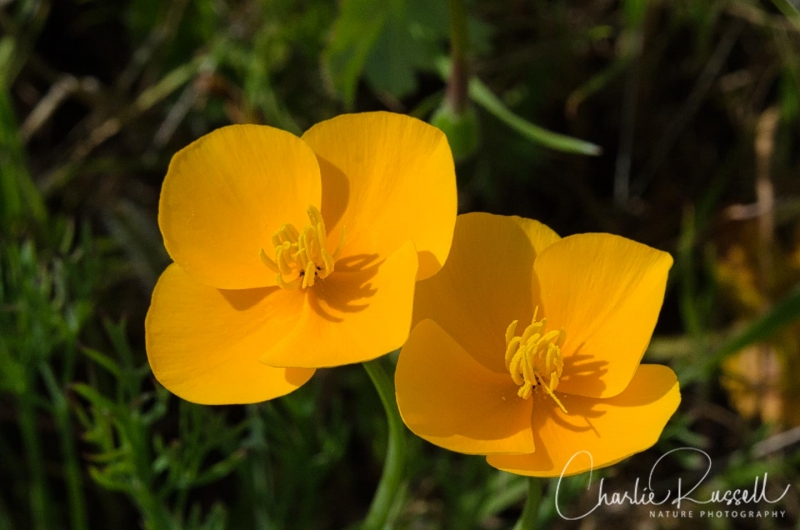
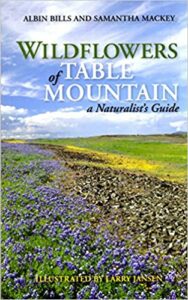
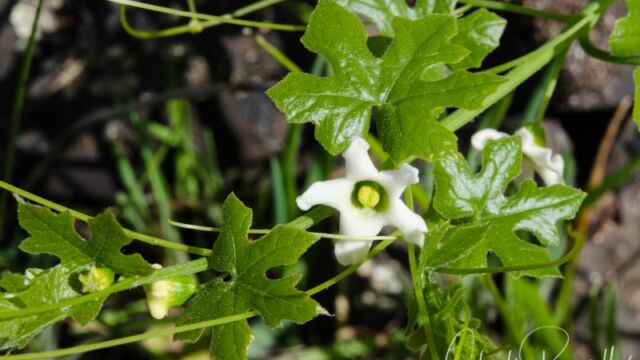
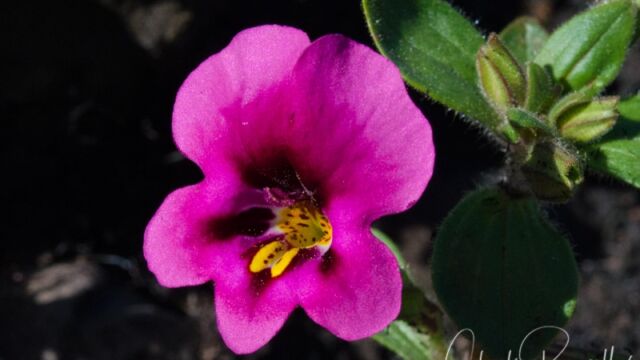
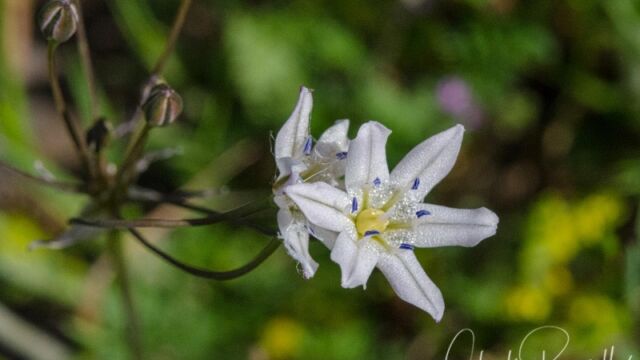
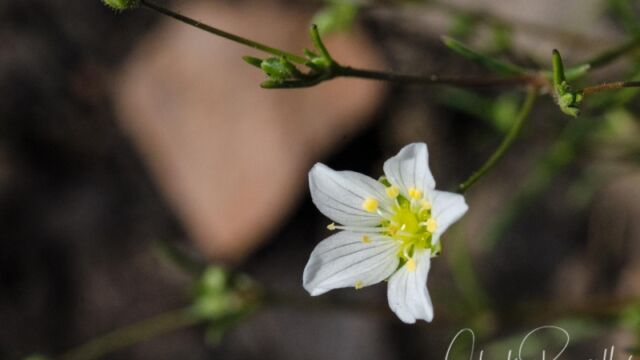
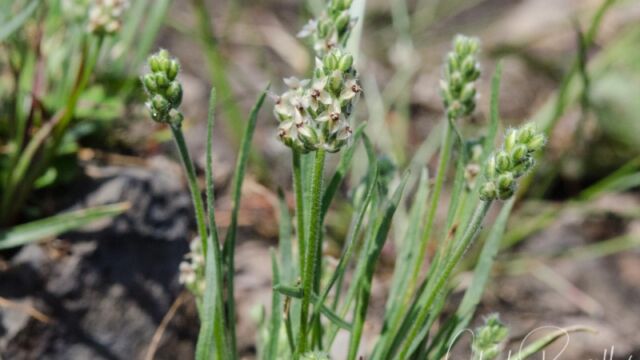
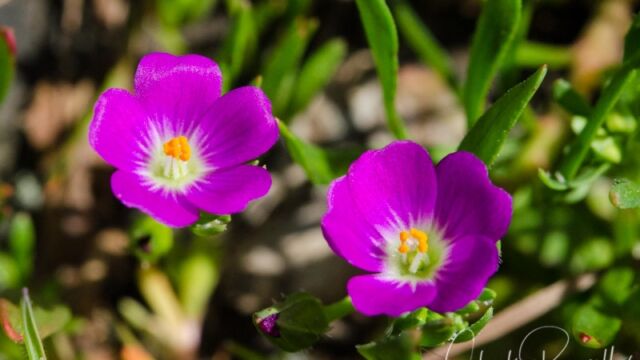
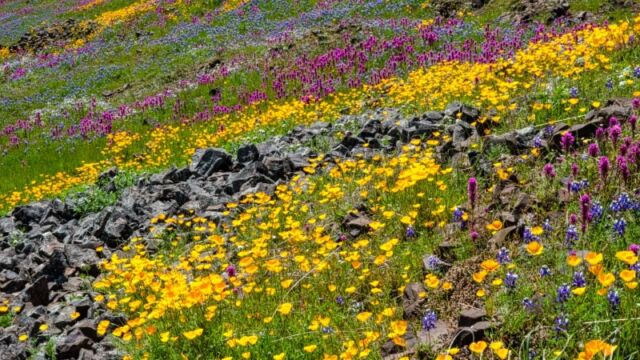
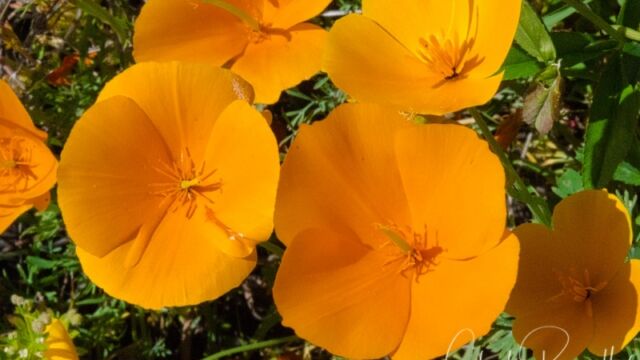
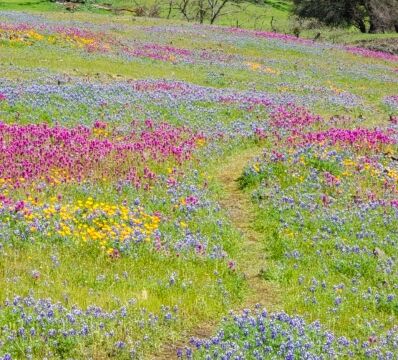

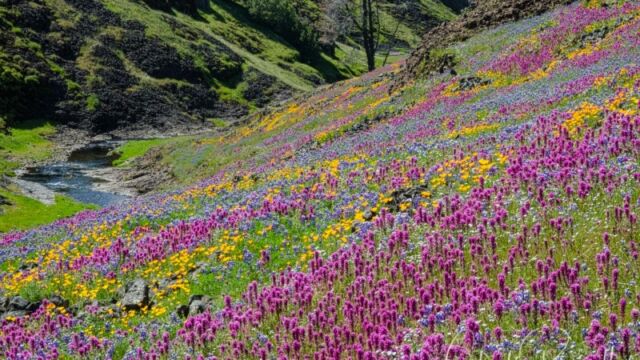


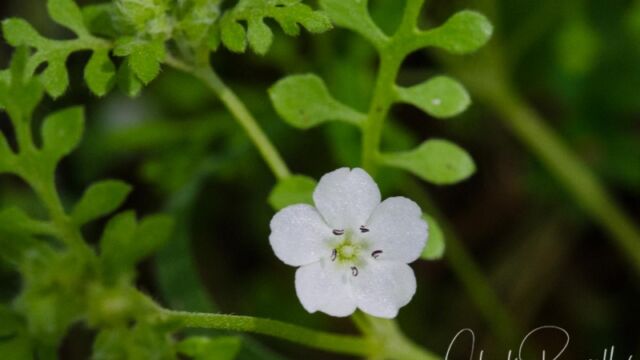
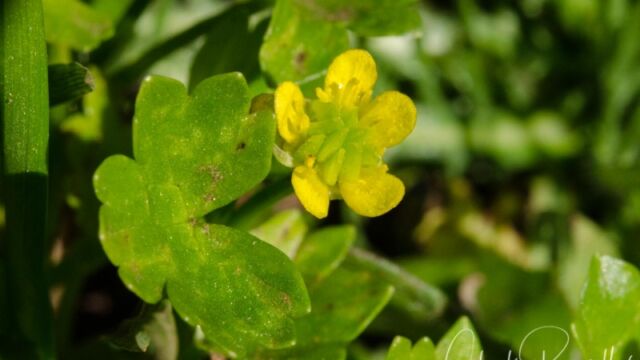
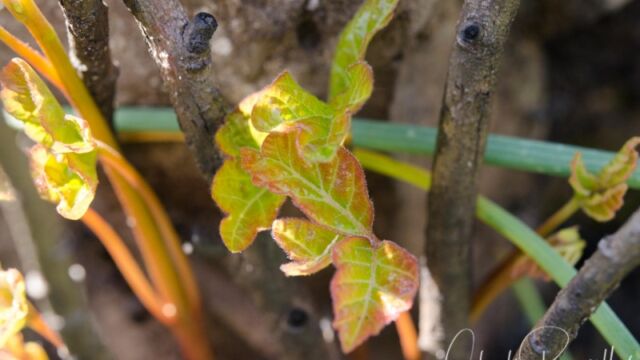
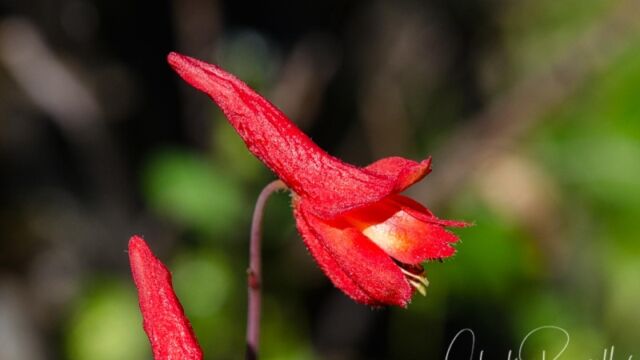
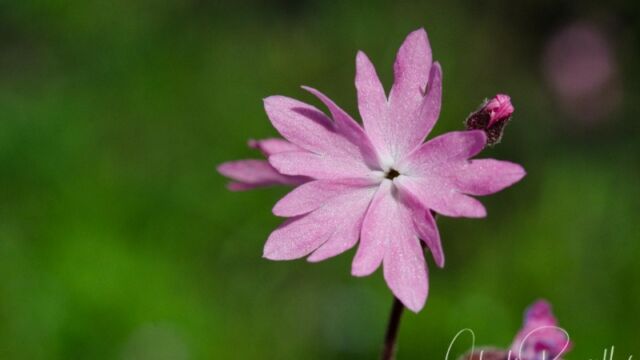
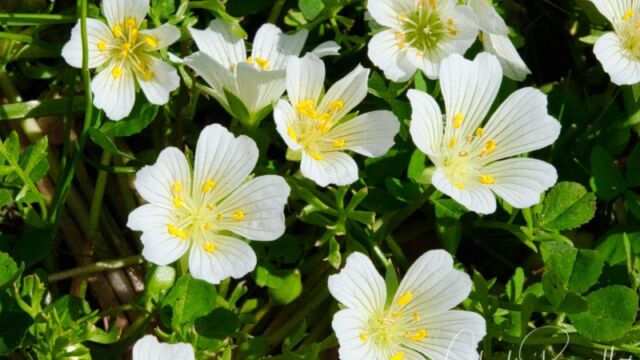
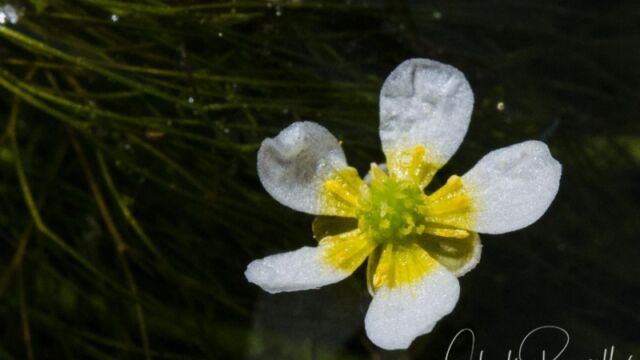
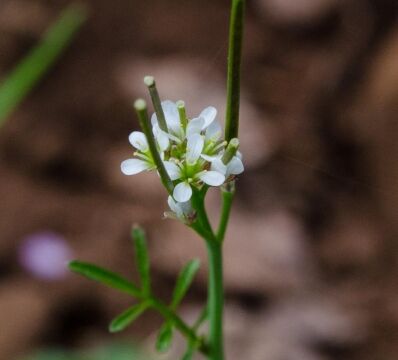
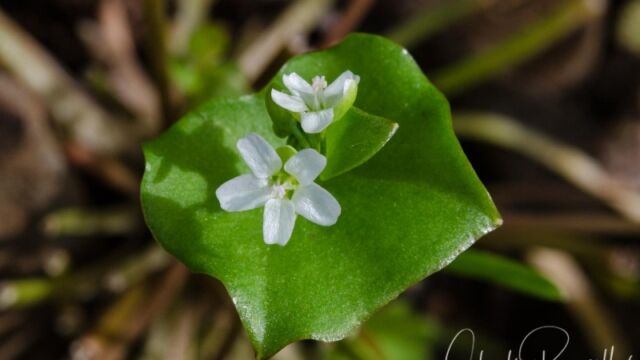
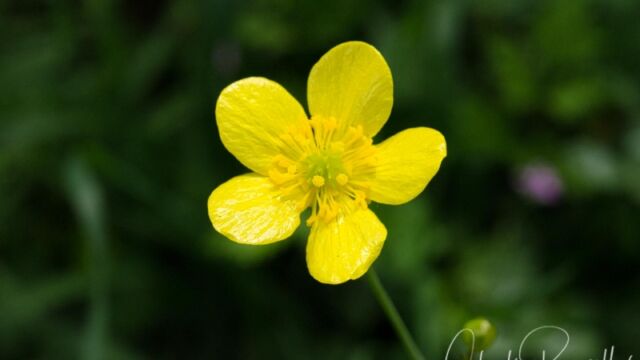
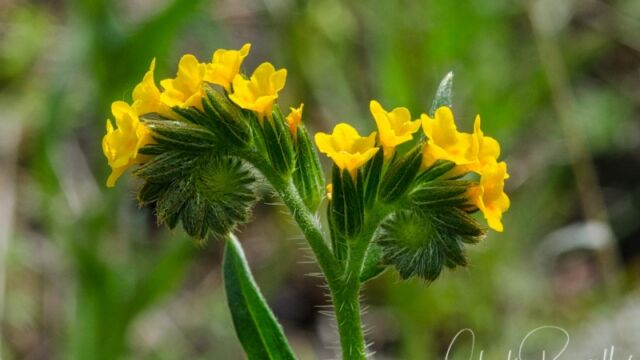
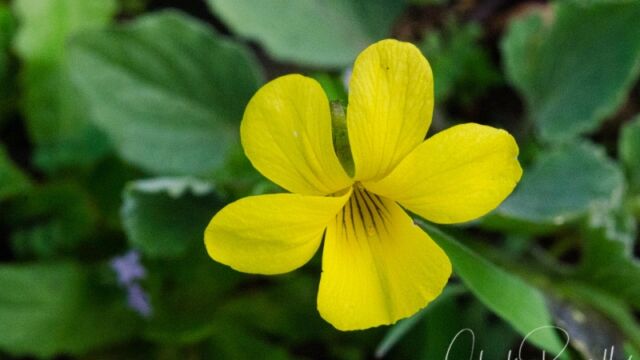
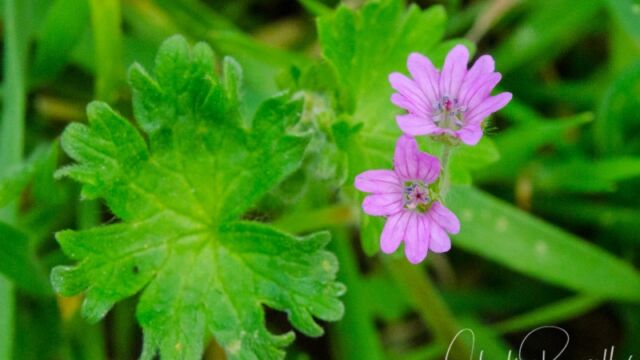
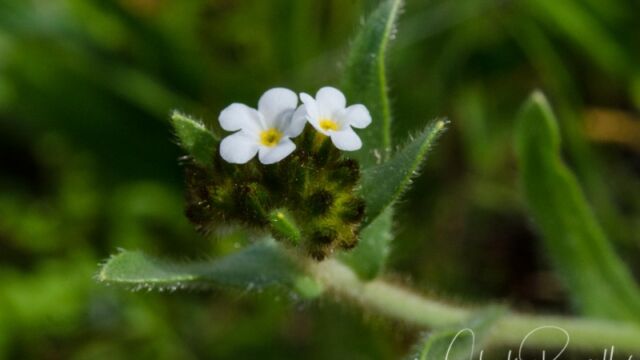
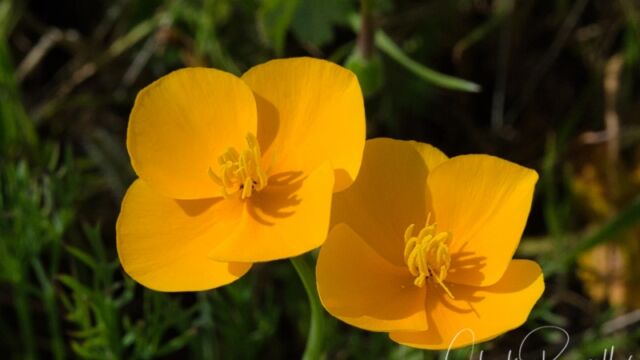
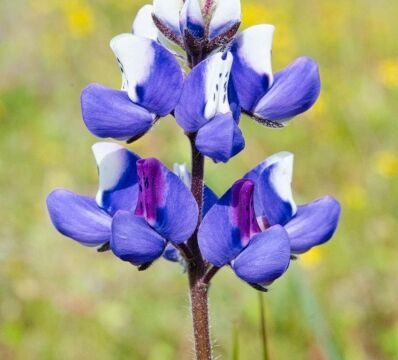
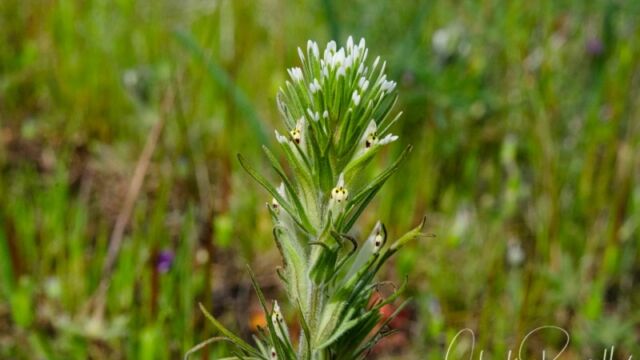
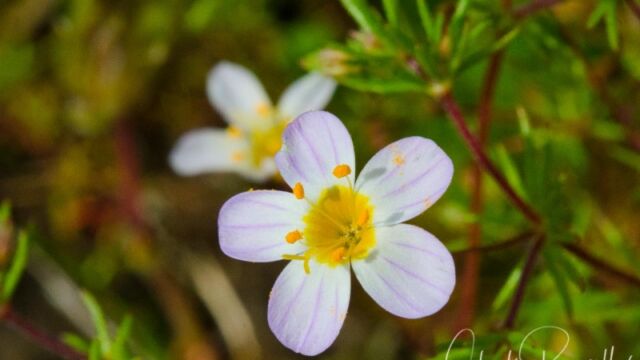
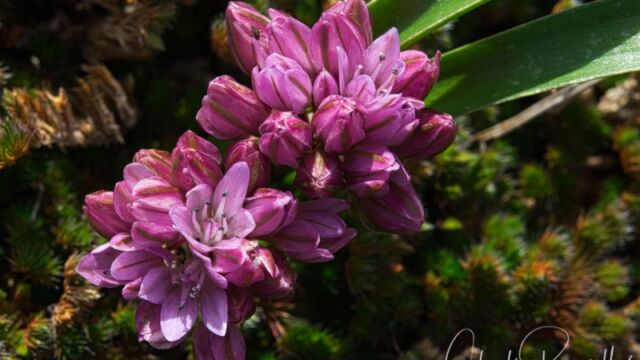
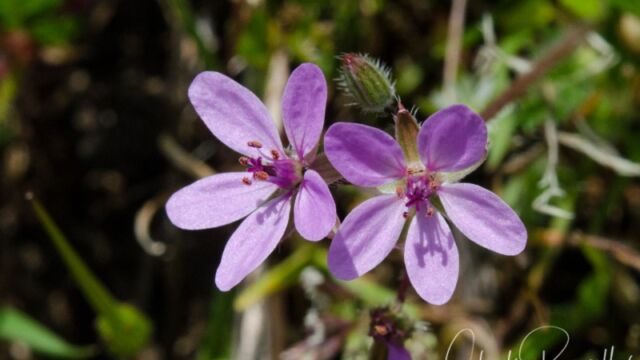
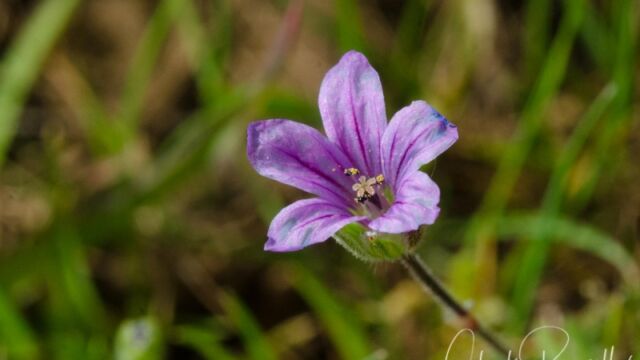
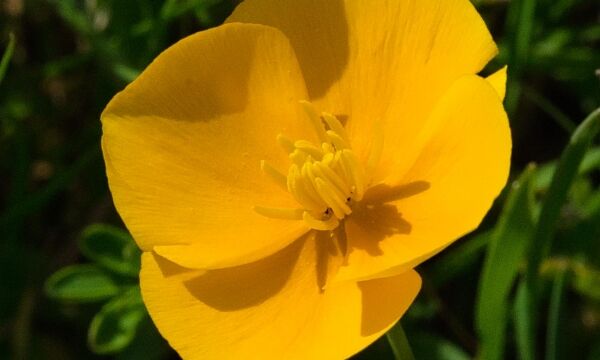
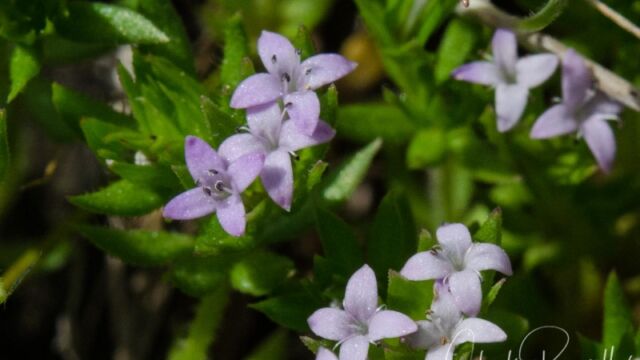
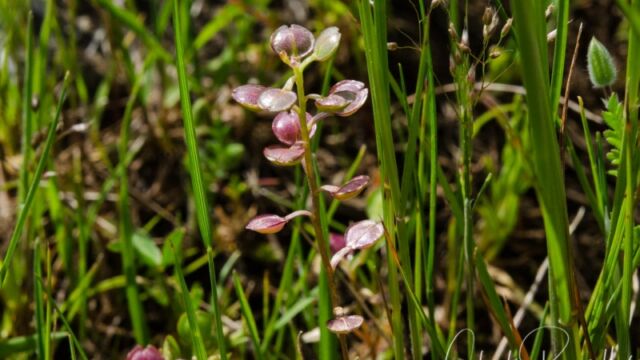
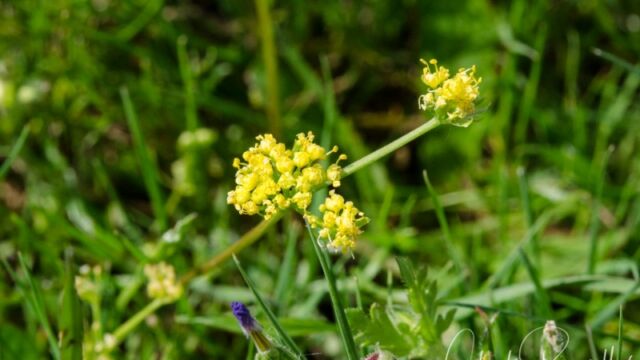
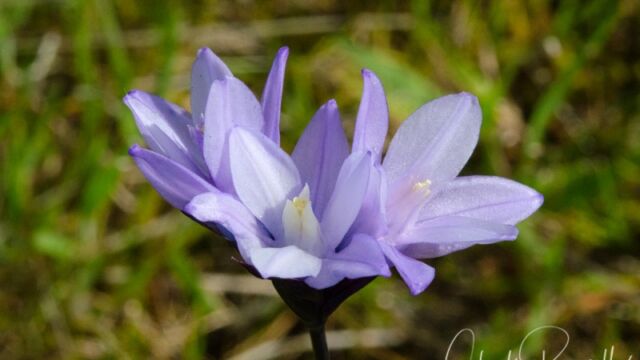

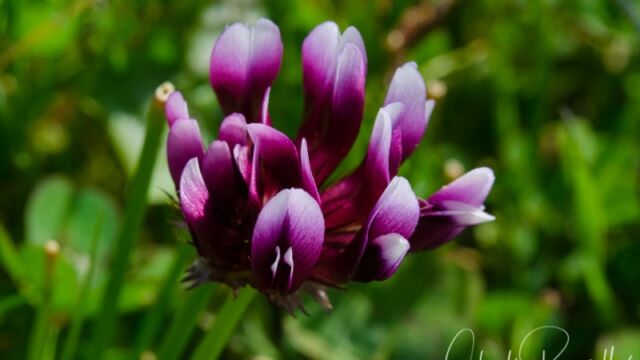
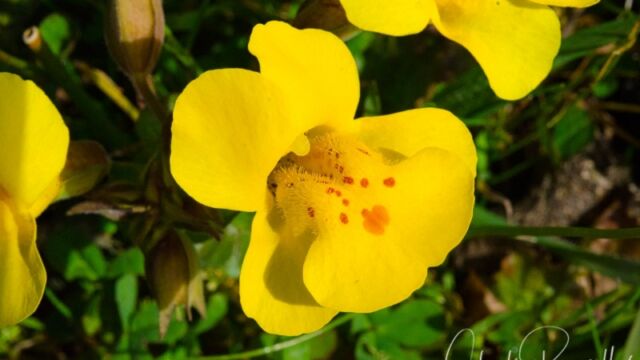
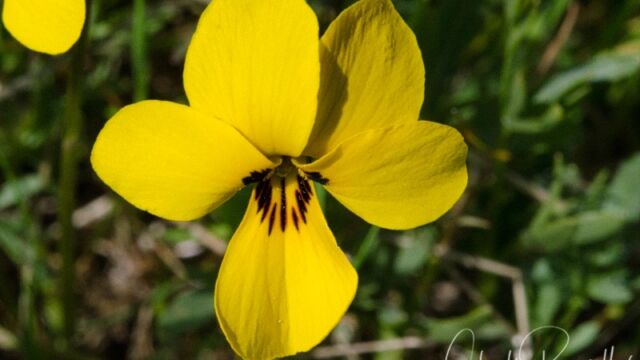
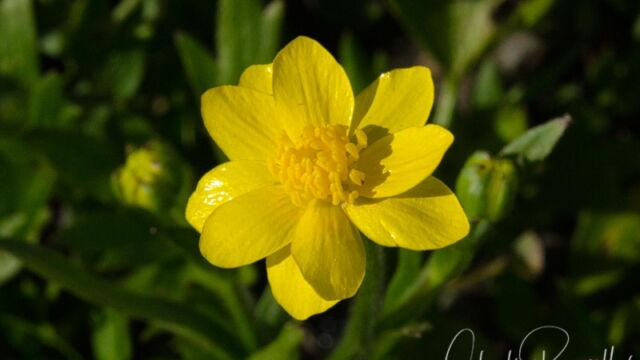
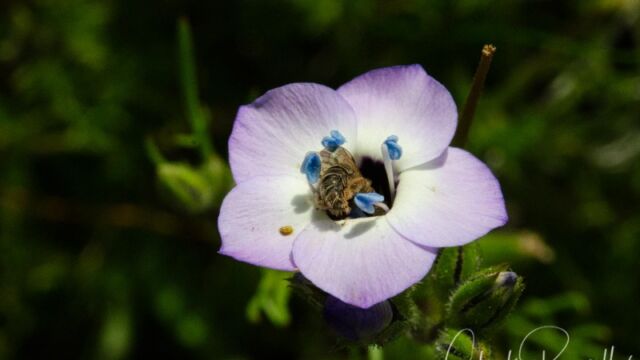
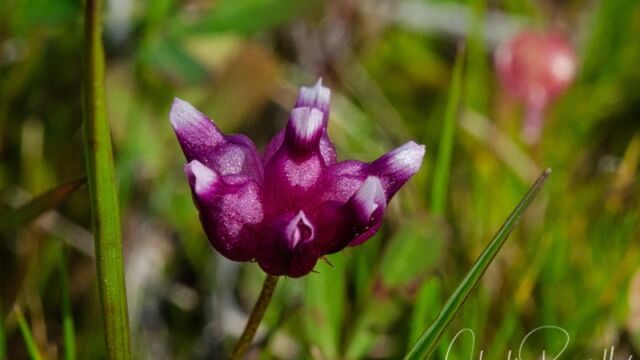

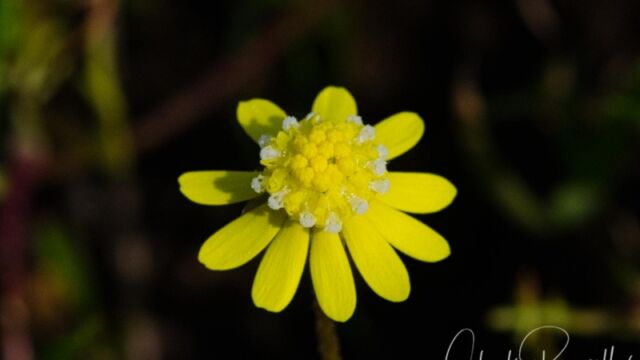
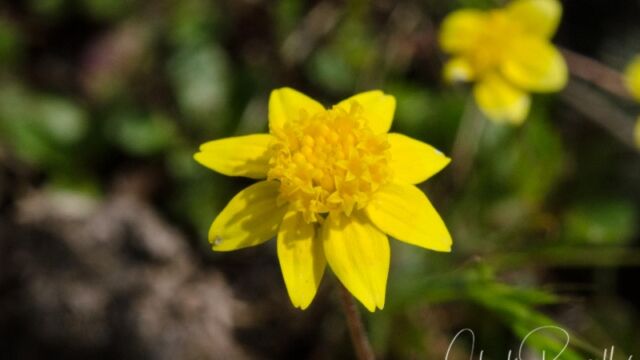
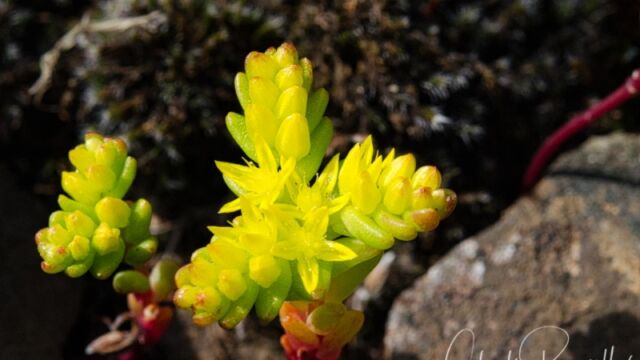

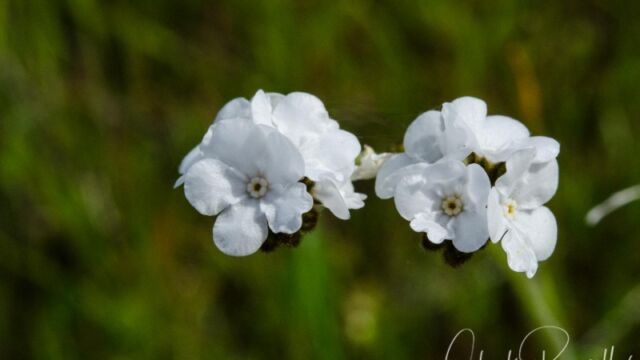
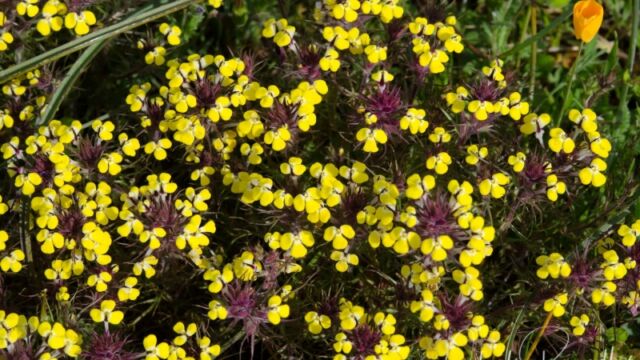

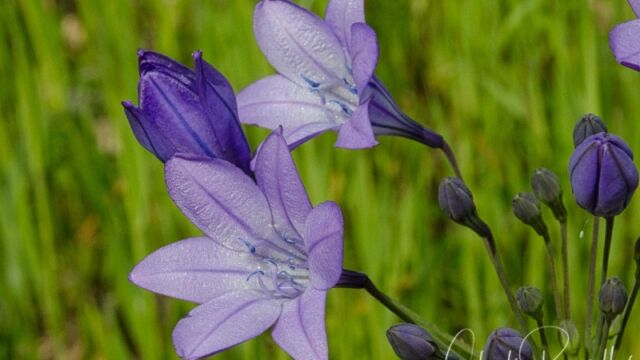
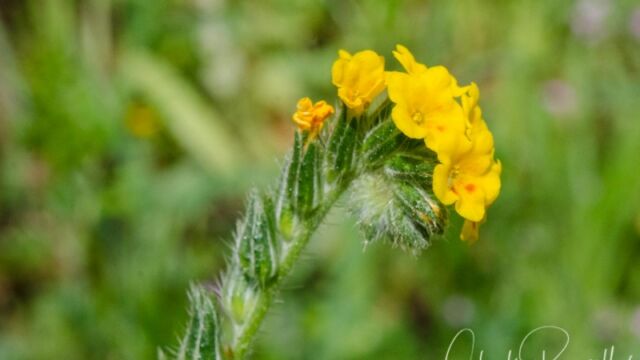
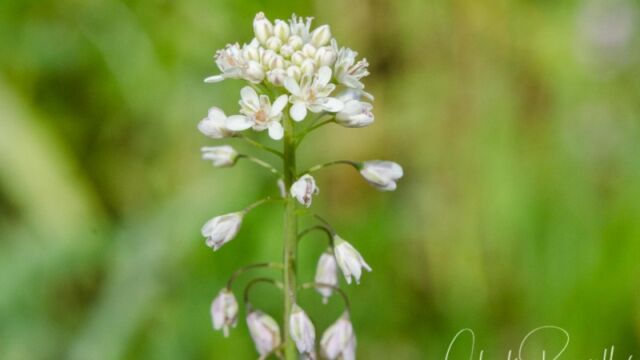
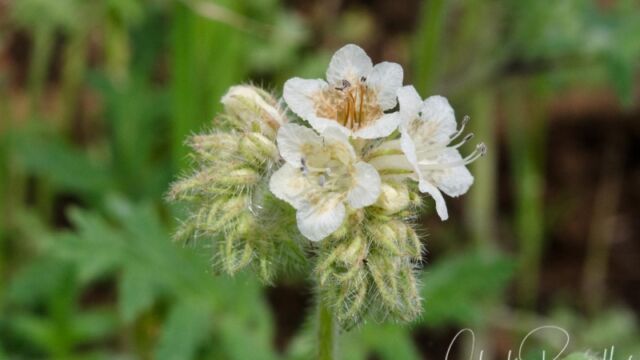
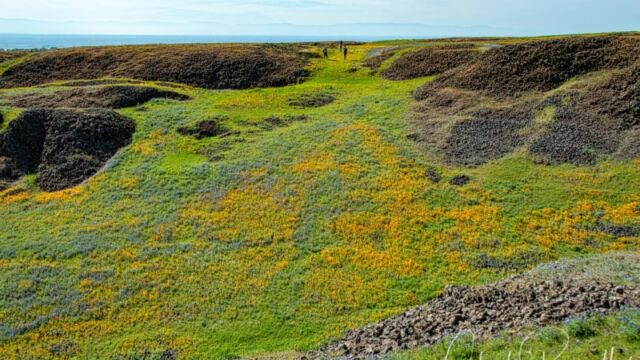
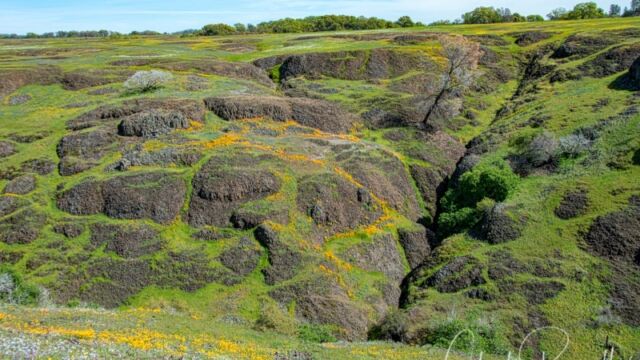

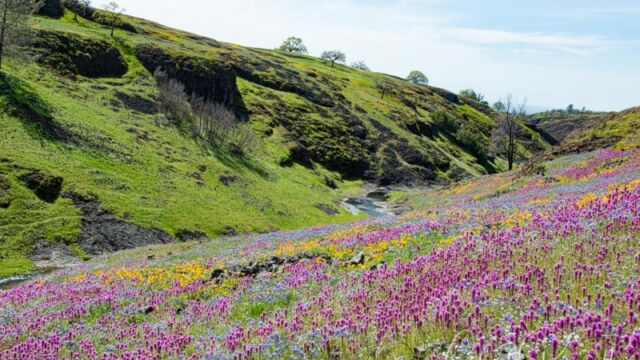
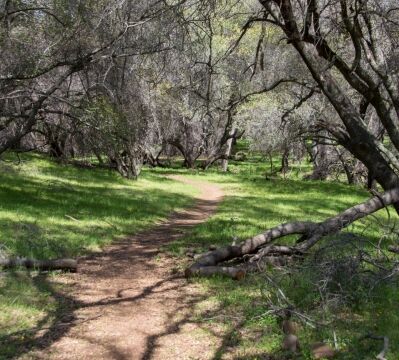
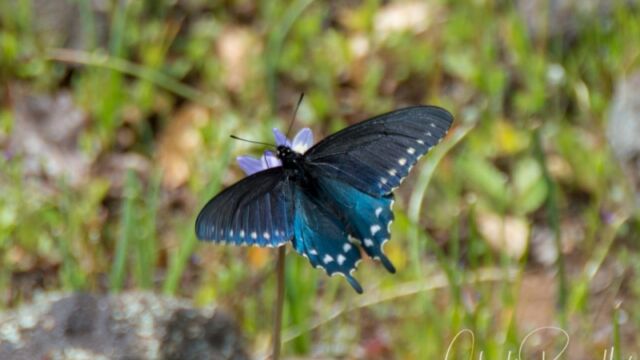
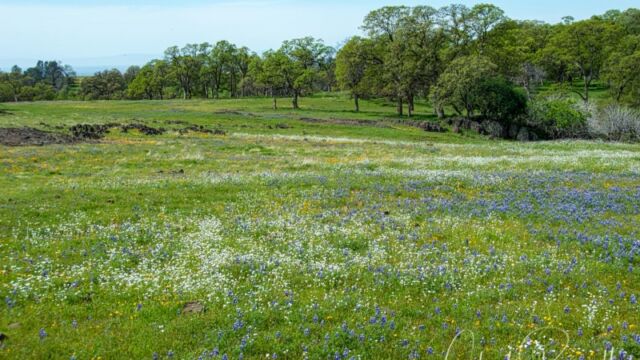
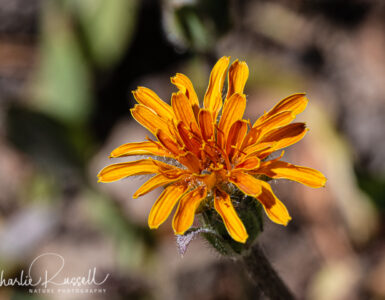
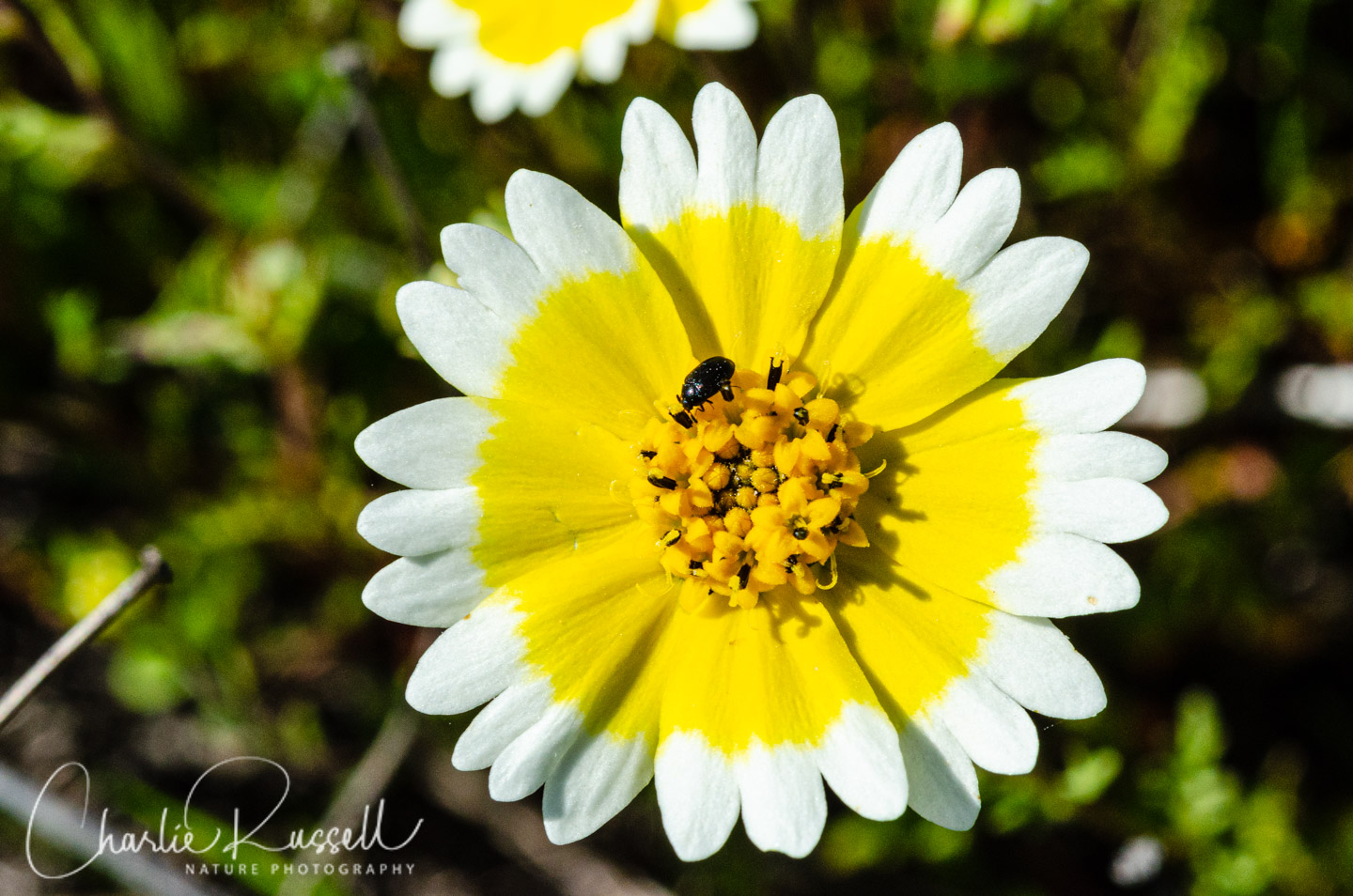
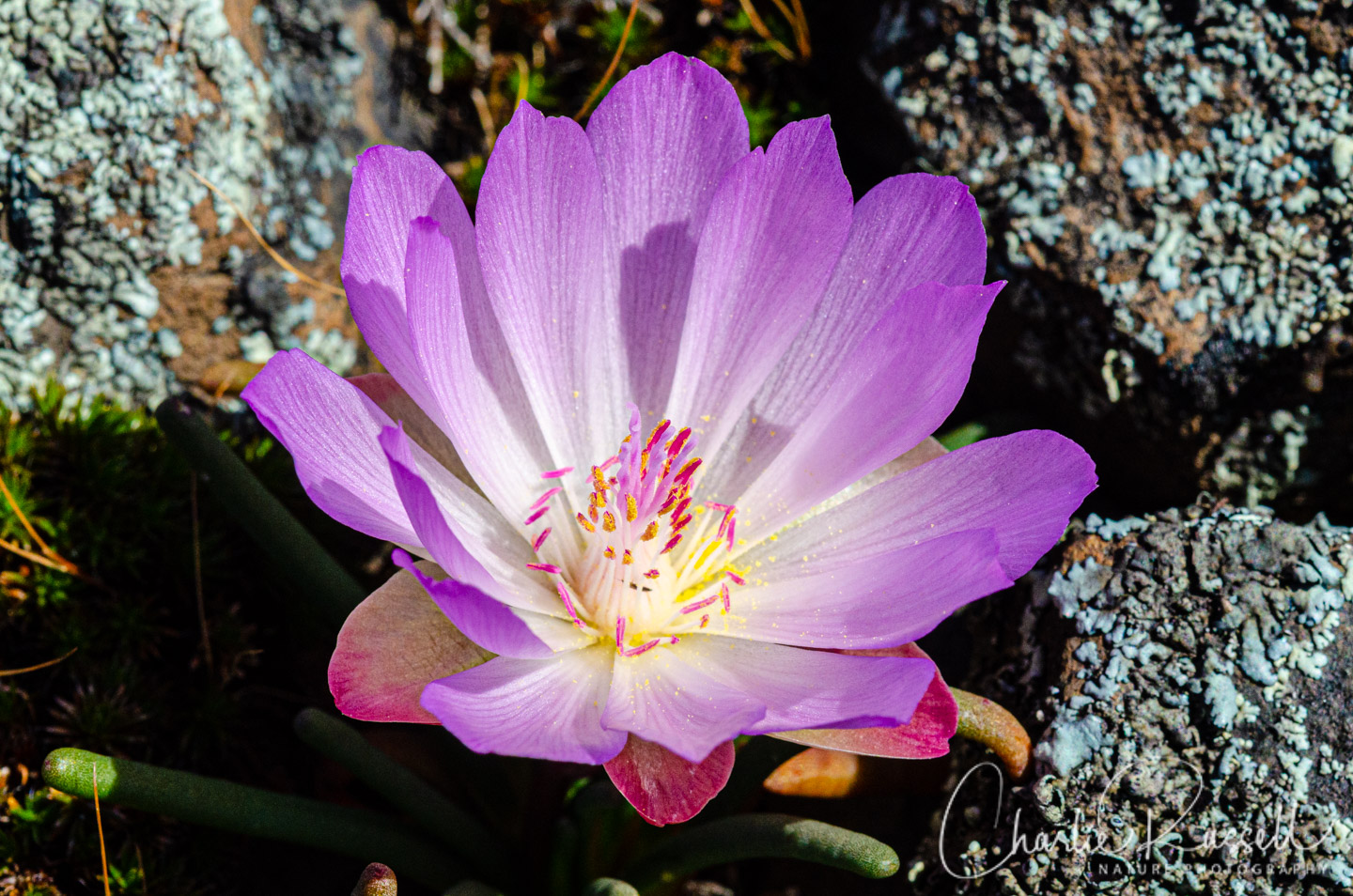
Unfortunately, the trails / topo map of North Table Mountain posted by the Chico Hiking Assoc. and referenced by you has the prominent water falls named differently than the previously published “The Wildflowers of Table Mountain” by Albin Bills and Samantha Mackie. To avoid ongoing confusion, Michael Jones, who presumably independently posted the Chico Hiking Assoc. map of North Table Mountain, should change the names of the water falls to correspond to those previously published by Bills and Mackie.
Otherwise, I always enjoy your posts on WILDFLOWER HIKES.
I’m not sure which was published first…
Over the past few years the Chico group has updated the map to change names of different features, getting closer to what the book has. However, I’ve seen other sources of information that name the falls more in line with what is shown on the map? I’m corresponding with Albin about this.
In any case, having the GPS coordinates on the features (whatever they are named) has been a major, major help to me. It is so easy to get turned around out there, with all the canyons!
My irritation with the map posted by Chico Hiking Association is my own (Woody Elliott), not Albin Bills. Hopefully somebody who can communicate with Michael Jones, who I assume established the Chico Hiking Assoc and maintains its website, could persuade Michael, a children’s dentist in Chico CA, to correct the names of prominent waterfalls on his online map to correspond to the previously published map of Bills and Mackie. Interpretive staff of Calif. Dept. of Fish & Wildlife have unsuccessfully tried to contact Michael Jones to make these name changes to avoid confusing many first time visitors who hike the Reserve.
Talking to Albin Bills, in the latest edition (2018) of the book they went ahead and changed the names of the falls in the book to match the names in that map, which should help resolve any confusion. He felt that would be the easiest way to resolve the issue.
Dear Charlie,
I wanted to personally thank you for all the information you provided on this site. I visited yesterday and was moved to tears by the beauty, especially after having moved to Arizona last year and being in such a dry patch this season. I had enjoyed the abundance of spring wildflowers in 2919 in southern California and elsewhere although at the time I knew nothing of North Table Mountain. I am hoping that North Table Mountain, because of its rocky ground, will survive better than places like Walker Canyon near Lake Elsinore, that got trampled to death by instagram selfie-makers who think that the one thing better than enjoying the flowers is to get a picture of sitting in them. I am sure you have seen the off leash dogs and others. I try very hard not to let the noise and disrespect of the land get to me as I enjoy God’s handiwork and share the beauty with others through pictures, as you have done here. Thank you for sharing the beauty and helping others enjoy it as well. This may have been one of the few good places to see wildflowers in California this year! Not much at all is happening in Arizona due to a drought, sad to say. But I remain hopeful.
Peace!
Daniel Barica
Glad it helped. North Table Mountain is a wonderful place, just about EVERY year. Unfortunately, it is getting loved to death, but once you get away from the parking lot things get better. As far as “one of the few good places”, there actually are some great wildflower shows in some spots in Northern California even this year. Hite Cove, for example. But the season is going to be shorter…